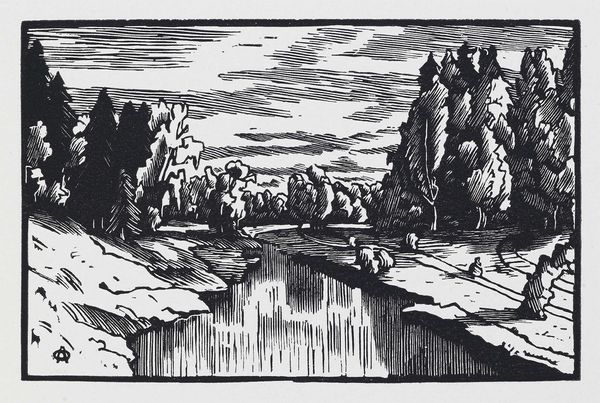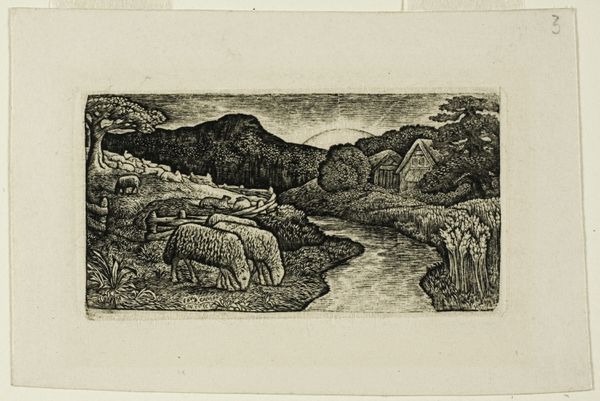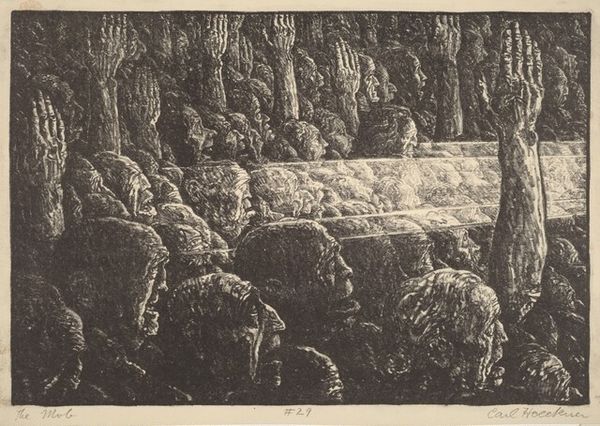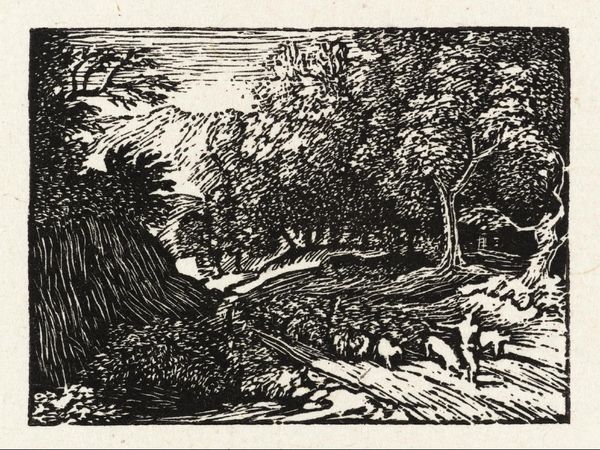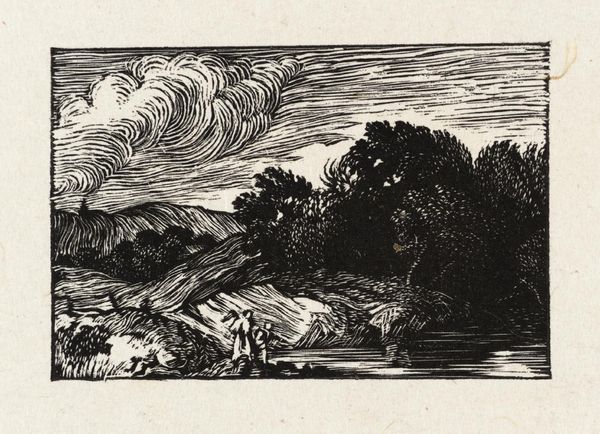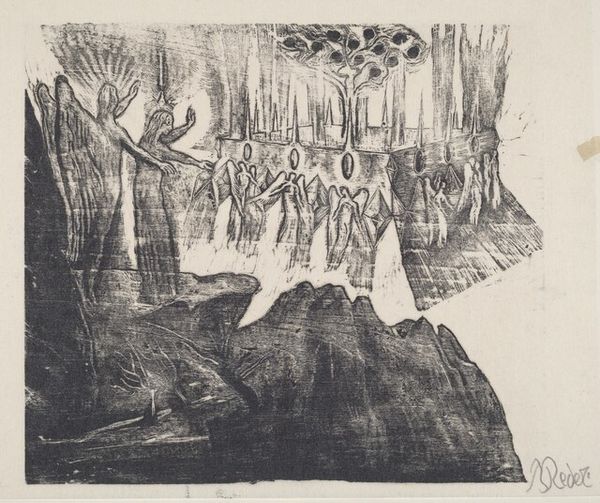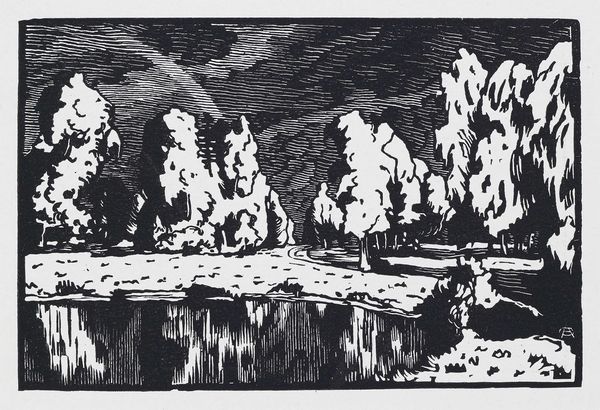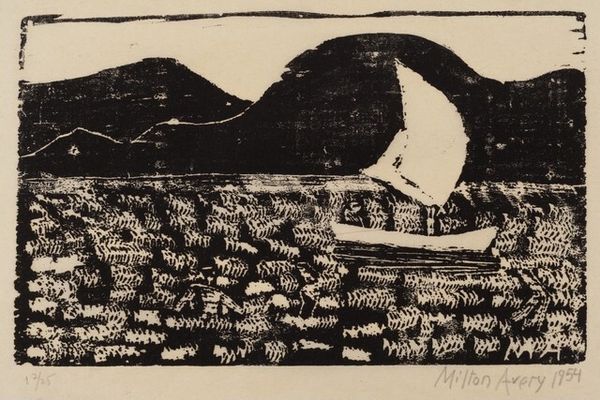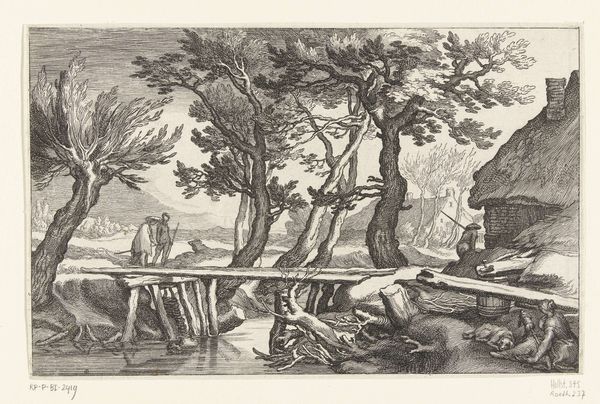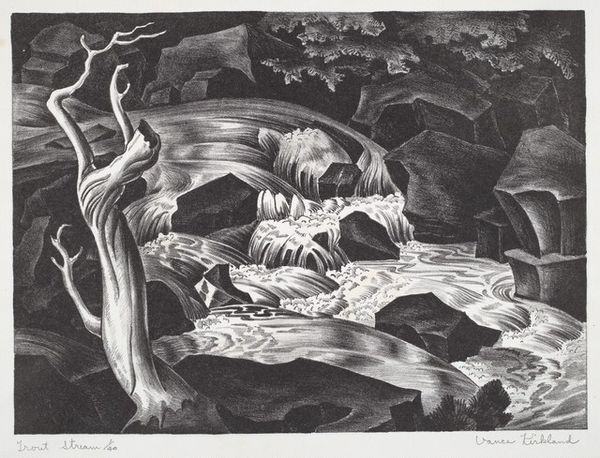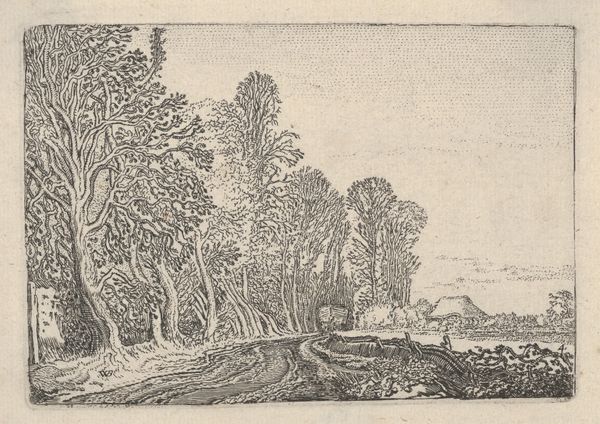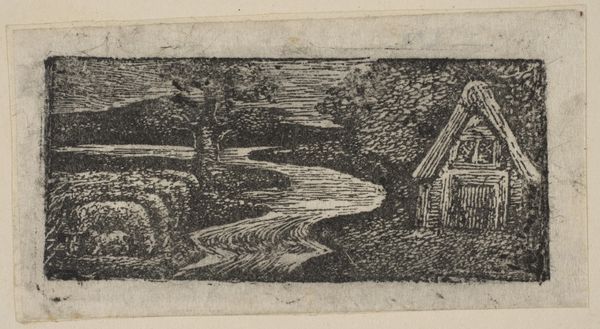
Copyright: Public domain US
Editor: Here we have Anna Ostroumova-Lebedeva's "Round Pond," made in 1923. It's a linocut print, and I find the stark contrast between black and white so striking. What catches your eye in this work? Curator: As a materialist, I'm immediately drawn to the process itself. Look at the textures Ostroumova-Lebedeva achieved with a linocut—normally associated with craft rather than high art. The gouges and deliberate cuts into the linoleum, usually destined for utilitarian use, elevate the material to artistic expression. Editor: So, you're saying the inherent qualities of the linoleum itself contribute to the artwork’s meaning? Curator: Precisely. The labour is evident in every line. Mass production was transforming society and the availability of materials during that time influenced artistic practice, moving printmaking toward this accessible medium, it begs us to ask about democratization and access to art, which aligns with shifting social dynamics. Editor: I hadn’t considered that the choice of material speaks to broader accessibility in art making. It’s such a contrast to, say, oil painting in those days. Does the lack of color impact this aspect? Curator: Definitely. Limiting herself to black and white further emphasizes the material constraints and elevates technique to the foreground. Notice how the light becomes almost sculptural; what does this choice tell us about the accessibility of color and artistic tools at the time for the working class? It prompts a critical look at the relationship between artistic expression and economic conditions. Editor: I’m starting to appreciate this piece a lot more now. Considering the linocut as more than just a medium really opens up the avenues to talk about labour and the economics of art. Curator: Exactly. By interrogating the materials and the means of production, we unlock a deeper understanding of the artwork’s significance.
Comments
No comments
Be the first to comment and join the conversation on the ultimate creative platform.
